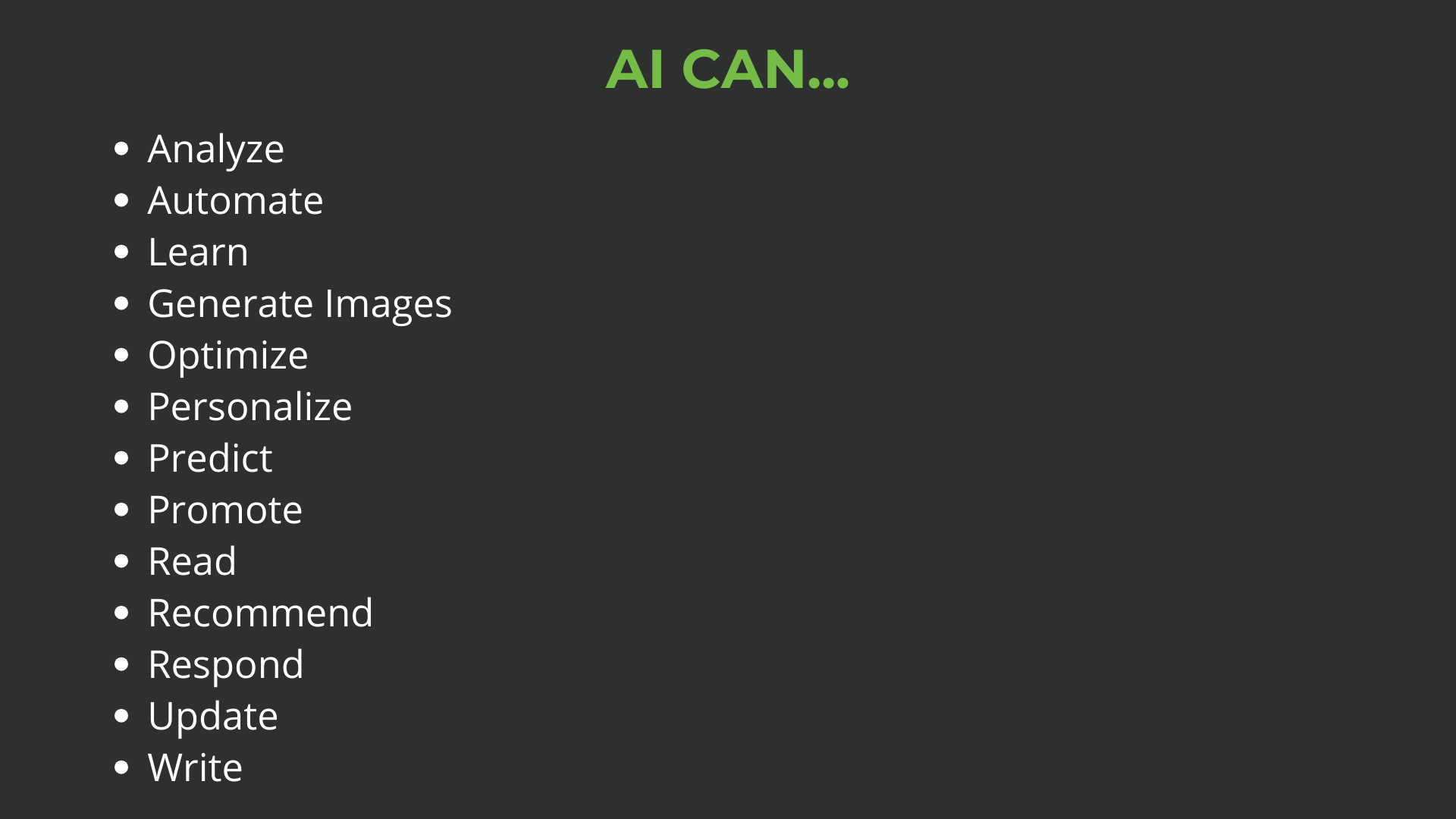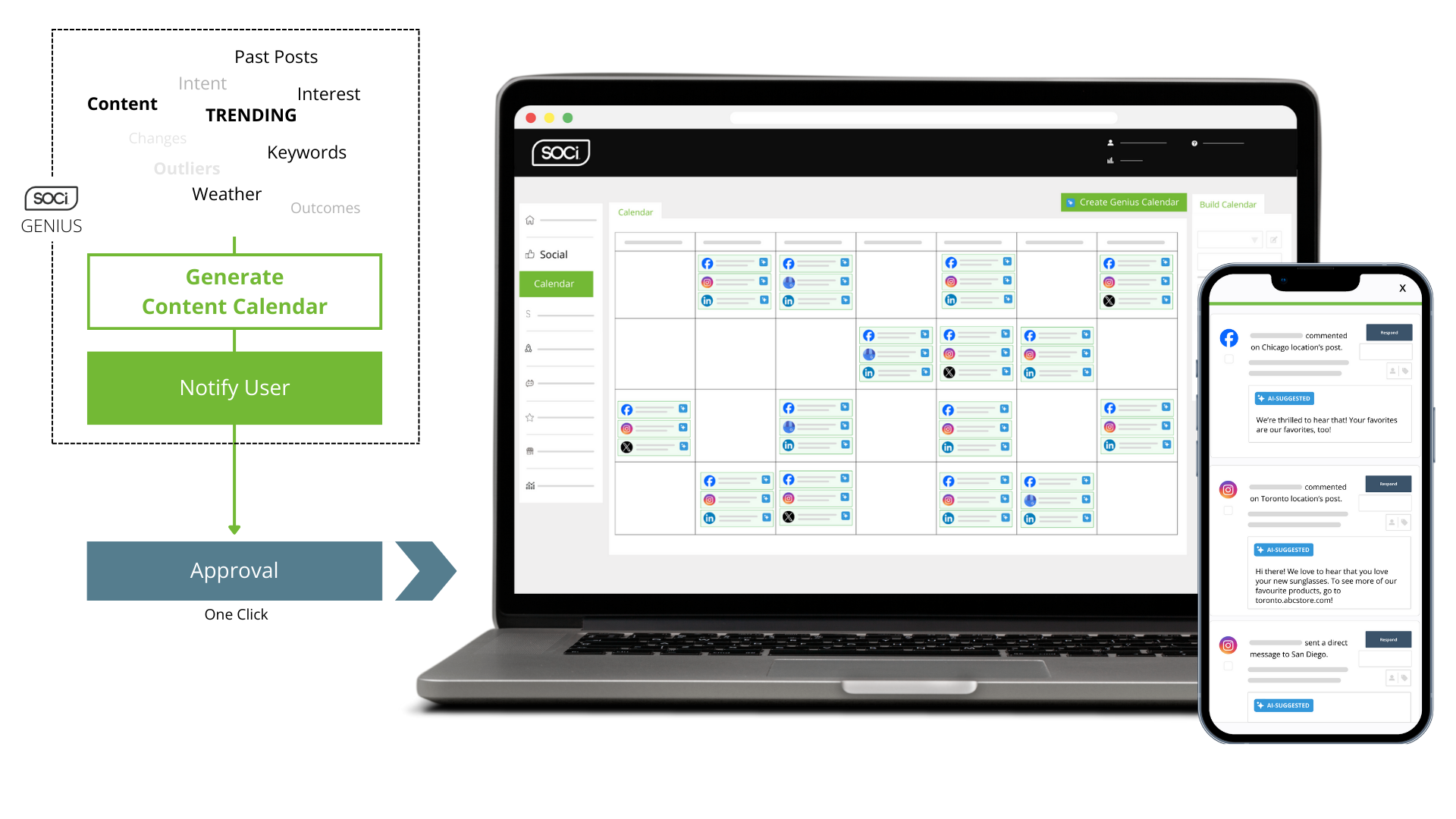What is Comarketing? An AI Definition
Table of Contents
You might have heard of the term co-marketing or co-branding before. Traditionally, co-marketing involves two organizations partnering to promote a brand, service, or product jointly. This partnership sometimes extends to collaborating with a celebrity or influencer to broaden both parties’ audiences.
What about comarketing without the hyphen? This is a new term driven by consumers’ needs, marketers’ challenges to meet these needs, and advancements in artificial intelligence (AI) technology.
Keep reading to understand the new, modern definition of “comarketing” and what it means for your brand.
What is Comarketing?
Today, comarketing means a partnership between people and technology — specifically AI technology.
Due to the meteoric rise in AI’s capabilities, there’s a fundamental shift in how marketers interact with and use AI technology. AI is changing how marketing gets done.
Aragon Research defines comarketing as:
A collective of intelligent assistants across key areas of marketing that analyze data, make strategic and tactical recommendations, and automate the process of marketing to buyers across channels, locations, and platforms.
To comarket means to partner with generative AI to automate and streamline your marketing workflows and campaigns.
Why The Rise in Comarketing?
There are three main reasons why comarketing exists today:
- Consumers’ needs and demands in a digital world have shifted dramatically
- Marketers struggle to meet consumers’ heightened expectations
- Advancements in generative AI transform how marketers interact with people
Let’s delve into each reason a bit more.
The Rise of Our Digital World and Changes in Consumer Needs
Web 2.0’s Launch
After the dot com bubble burst in the early 200s, search engine traffic grew to about 6.4 billion monthly in 2006. With this increased user base came Web 2.0 — where people became active participants with a voice versus passive users.
Social media, blogs, wikis, and forums grew in popularity, enabling users to create content, discuss topics, and connect with other users.
Consumers could also interact with businesses. For instance, in 2007, companies could create Professional Business Pages on Facebook. In the same year, the first iPhone came out. And in 2009, Yelp began letting businesses reply to reviews.
The Mobile and Local Shift
By early 2014, internet usage on mobile devices exceeded PC usage. The rise of mobile device usage turned search local. People could find information in seconds while on the go. By 2021, 46% of all Google searches were linked to something local.
Now, consumers can find information instantaneously. People are more informed and discerning than ever regarding businesses and brands. When assessing businesses, they regularly consider price, online reviews, businesses’ responses, and many other factors.
These changes in the digital world and consumers’ expectations put a lot of pressure on companies to meet these expectations.
Marketers Struggle to Keep Up
Over the past decade, brands and their marketing teams have struggled to meet consumers’ expectations and needs. These heightened expectations require a deep understanding of consumer behaviors and preferences. One-size-fits-all campaigns don’t cut it anymore. Today’s marketers must deliver personalization and omnichannel support across multiple digital channels.
At the core, this is a human capacity issue.
It’s challenging for marketers to be everywhere all at once across the digital landscape, especially for brands with numerous business locations.
Marketers turned to various marketing technologies (MarTechs) or point solutions to reduce the noise and better engage with customers. However, many of these MarTech solutions are often:
- Too siloed
- Fail to customize campaigns appropriately
- Have difficulty making data-driven decisions at scale
Thankfully, we’re at another technological and digital marketing inflection point. This time, it’s being driven by AI.
AI Advancements Lead to Comarketing Clouds
In November 2022, OpenAI released ChatGPT, which propelled the generative AI technology race. The average monthly search volume for the keyword “AI” worldwide grew from 9.94 million in June 2022 to 30.45 million by March 2023 — a 284% increase.
Consider 2023 as the inaugural launch of generative AI, while 2024 will be about implementing it.
So, what can AI do?

AI is revolutionizing marketing. However, AI by itself isn’t enough in marketing. It needs humans. AI isn’t just a tool but a partner to marketers — it’s your comarketer.
This leads us to CoMarketing Clouds.
What Are CoMarketing Clouds?
CoMarketing Clouds are marketers’ partners; they’re a marketer and data scientist rolled into one AI-driven engine that can intelligently assist marketers across multiple areas of marketing.
Remember, most MarTech solutions have limited intelligence and siloed data. Meanwhile, AI powers CoMarketing Clouds. They analyze data, use that data to make predictions and recommendations, and generate personalized and strategic content.
CoMarketing Clouds help address the human capacity issue many marketing teams face. They’re a partner to marketers and can help automate time-consuming tasks, giving your marketers valuable time back.
Furthermore, CoMarketing Clouds pull in data from every marketing channel, giving complete, omnipresent data to make recommendations and generate content. This omnipresence eliminates disparate and limited data that can mislead your marketing team.
Why Multi-Location Enterprises Need CoMarketing Clouds the Most
If you’re a multi-location enterprise, each business location has thousands of monthly data points from various channels.
These data points consist of:
- Reviews
- Comments
- Engagements
- Online orders
- Phone calls
- Emails
These engagements come from your:
- Local listings
- Local pages
- Social media profiles
- Chatbots
- Surveys
It’s nearly impossible for corporate and local marketing teams to respond to all of these engagements, much less track and analyze their data. That’s why over 300 million locations have turned to SOCi.
SOCi is the CoMarketing Cloud for multi-location businesses. We’ve tailored our innovative platform for intelligent omnichannel automation at the local level.
SOCi Genius is the AI brain behind our CoMarketing Cloud and powers it. It’s an AI automation layer on top of our platform that our products use to automate human action.

SOCi Genius serves as a proactive marketing partner, leveraging real-time data aggregation and transformation to provide actionable insights tailored to each location.
Our CoMarketing Cloud solves the human capacity issue by automating actions and engaging with local customers to meet their needs and expectations.
Request a demo today to learn more about our CoMarketing Cloud’s capabilities and how it can revolutionize your multi-location marketing strategy.
